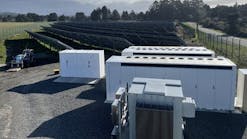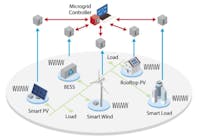Interest in microgrids has grown in parallel with our fixation about distributed energy resources. Their purpose is to distribute electricity within a localized network, drawing upon onsite generation as needed, with the capability of islanding and operating autonomously from the grid during outages. Frequently, the justification for operating a microgrid has been economics as in the case of combined heat and power (CHP) on a college campus or in an industrial plant. Today, there appears to be more proponents with a variety of arguments for installing microgrids, including environmental benefits, improved reliability, resiliency, and economics. Is a microgrid the best approach for most customers?
One might think so based on the number of articles and vendor coverage microgrids receive. Indeed, T&D World is guilty as charged with significant coverage of the subject over the last several years. One of the best articles entitled “Lessons Learned from Microgrid Projects” was submitted by Duke Energy. The article describes two microgrid pilot projects developed, commissioned, and tested by Duke at its facilities. Lessons learned from the utility’s experience make it clear that developing and operating a safe, reliable, useful microgrid is not as simple as some industry literature suggests.
The Duke pilots established that successful microgrids require: a detailed understating of load diversity and a proper generation asset mix; through modeling/engineering with short circuit and direct-current arc-flash analysis including for system secondary voltages; system protection that reflects solar and battery grounding systems (as applicable) in grid connected and islanded mode; designs reflecting battery cooling and aux power requirements; integration and testing of disparate distributed resources, often supplied by different vendors at different times; meeting conditions at the point of interconnection as well as permit or system capability limitations during islanded operation; and ensuring all control and communication devices have properly sized uninterruptible power supplies to ensure safety and system protection during mode transitions.
An article contributed by Central Electric Cooperative entitled “A Microgrid to Power the Future” illustrates several important points. Central’s microgrid is on a co-op owned campus that includes a distribution connected solar array. Because the campus includes a key cooperative operations center, both battery storage and a backup diesel generator are needed to maintain reliability. Central found that a 50% variation in PV production can occur in a one second interval with weather changes. The co-op demonstrated the importance of multiple generation or storage resources for maintaining reliability where intermit resources and an isolated grid are involved.
Additional examples of microgrid projects built by utilities around community solar projects include the Arlington microgrid project by the Snohomish County Public Utility District and the ComEd Bronzeville community microgrid. Both involve solar arrays feeding to the distribution grid and include batteries and backup generators. One goal for these types of projects is to improve reliability and resiliency for loads on the microgrid with potential benefits to the broader community during emergencies. Experts can help customers analyze their electric service and evaluate a range of options to provide quantifiable service improvements, including emergency generators, uninterruptible power supplies, new feeders, and potentially, microgrids.
“Reimagined Microgrids” published in T&D World in February 2022, describes a new genre of microgrid intended to harden the grid against high impact, low frequency (HILF) hazard events by strongly integrating a mix of generation, transmission, distribution, and end users. The article recommends this approach for critical corridors, circuits, stations, and equipment, similar to how one might design black-start generation and cranking paths. The authors believe HILF hazard events are on the rise and utilities are not emphasizing resiliency sufficiently. Obviously, both arguments require careful scrutiny due to their public safety and customer cost implications.
Several articles have intimated power transactions between customers on microgrids. One such article describes the Brooklyn Microgrid that was used to demonstrate a blockchain based ledger technology capable of collecting and validating the data surrounding direct energy trades between buyers and sellers. The demonstration proved the ledger technology works, but any transactions that occurred, other than the sale of solar energy credits, were purely theoretical. As of today, net metering or direct sale to the host utility are the accepted methods for U.S. prosumers to sell excess energy.
Microgrids offer a means for optimizing energy usage and reliability on sites with specific, often specialized infrastructure features such as CHP or solar plus storage with backup generation. They may also help achieve environmental benefits depending upon many factors. However, cost effective reliability improvement using a primarily islanded microgrid may be challenging given the high average reliability of the U.S. grid. Hardened microgrids designed to improve overall grid resiliency may be beneficial where cost is not important. Before opting for a microgrid, customers should evaluate the full range of options for achieving their service augmentation objectives. A microgrid may not be for everyone.


